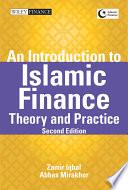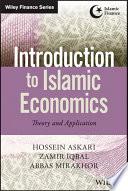
Globalization and Islamic Finance
Convergence, Prospects and Challenges
This is an extremely valuable book written by three highly qualified scholars whose credentials for writing such a book are difficult to match. The timing of the book is also perfect, having come at a time when the worst financial crisis in living memory has intensified the quest for reform of the international architecture. The proposals made by the authors should go a long way in not only reforming the system but also in accelerating the move towards financial globalization and convergence of the conventional and Islamic financial systems. Dr. Umer Chapra Prominent Scholar of Islamic Economics and currently Research Advisor Islamic Research and Training Institute (IRTI), Islamic Development Bank (IDB) Globalization and Islamic Finance, by three well-respected authors in Islamic finance, provides a thought-provoking analysis of an important and topical issue, particularly, given the global impact of the current financial and economic crises. The book is the first attempt to make a compelling case of convergence between globalization and Islamic finance. Askari, Iqbal and Mirakhor should be praised for this serious effort, which is a must-read for academics and practitioners interested in Islamic finance. Professor Rifaat Ahmed Abdel Karim Secretary General Islamic Financial Services Board (IFSB) This book has a robust discussion of the growth and spread of Islamic finance within the umbrella of globalization. The book provides a unique view of Islamic finance, not only from the perspective of how Islamic finance fits within globalization in general, but globalization of finance in particular. This is a must read for anyone interested in the complex and complicated world of Islamic finance. Scheherazade S. Rehman, Ph.D. Director, European Union Research Center Professor of International Finance, School of Business The George Washington University I have not come across any literature that has delved so intensely in financial globalization, in particular Islamic finance. Due to this reason, I would encourage all interested in this area to read this book. Hajah Salma Latiff Managing Director, Crescent Sdn. Bhd. Former Director, Centre for Islamic Banking, Finance and Management (CIBFM), Universiti Brunei Darussalam The recent crisis has evoked wide interest in Islamic finance publications. Globalization and Islamic Finance is both timely and needed. Sani Hamid Director, Wealth Management Financial Alliance (Singapore)
- ISBN 13 : 1118178904
- ISBN 10 : 9781118178904
- Judul : Globalization and Islamic Finance
- Sub Judul : Convergence, Prospects and Challenges
- Pengarang : Hossein Askari, Zamir Iqbal, Abbas Mirakhor, Zamir Iqbal, Abbas Mirakhor, Zamir Iqbal, Abbas Mirakhor, Zamir Iqbal, Abbas Mirakhor, Zamir Iqbal, Abbas Mirakhor, Zamir Iqbal, Abbas Mirakhor,
- Kategori : Business & Economics
- Penerbit : John Wiley & Sons
- Bahasa : en
- Tahun : 2011
- Halaman : 225
- Google Book : http://books.google.co.id/books?id=ZDTPfr8Mv-EC&dq=intitle:Islamic+Monetary+Economics&hl=&source=gbs_api
-
Ketersediaan :
This is an extremely valuable book written by three highly qualified scholars whose credentials for writing such a book are difficult to match.









